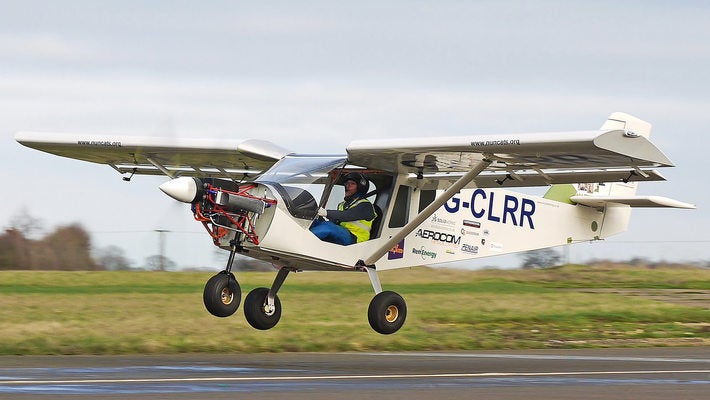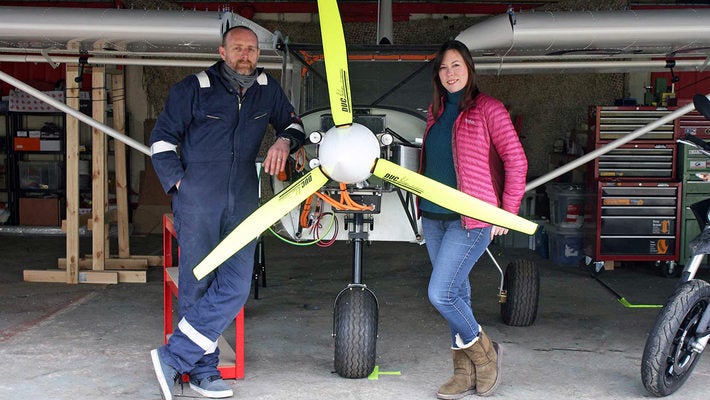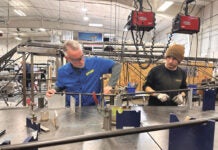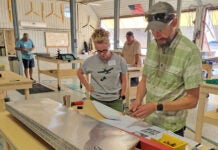
The all-electric Zenith CH 750 Cruzer completed its first successful test flight on January 30 in the United Kingdom. The electric CH 750 or “Sky Jeep” as it’s often referred to, was developed by NUNCATS to provide sustainable transportation to remote communities. The first chunk of NUNCATS stands for “no unnecessary novelty,” which is their guiding principle—To create the simplest possible solutions for difficult problems. The second part stands for “community air transport services.” They hope to transport doctors and medical supplies to some of the most isolated areas of the world.
NUNCATS, a husband and wife team, chose Zenith’s popular CH 750 because it’s well suited for off-airport operations and shorter runways. They partnered with Zenith and several start-up investors, and took the existing CH 750 Cruzer light sport aircraft design and adapted it for all-electric operation.

“While we all know that today’s battery technology will not permit the range and endurance available with ICE [internal combustion engines], there are some clear advantages of electric power in addition to the more obvious sustainability claims,” explained Sebastien Heintz, president of Zenith Aircraft Company. “The simplicity of electric motors has the potential to make light aircraft propulsion systems more reliable and easier to install and maintain (especially important for amateur aircraft builders and owners), and near-instantly available torque of electric power can further improve upon the STOL (short take-off and landing) performance of Zenith kit aircraft designs.”
NUNCATS has been working on the build these last three years. They plan to tap into ground-based networks of solar powered energy grids in remote villages and towns so that the aircraft can deliver vital medical staff, supplies and teachers without relying on outside fuel needing to be flown in. The ongoing test program will continue to establish range, payload and other performance figures with different battery configurations. While they still have a lot of work ahead of them, the successful first flight is one big step toward providing rural and hard to reach communities with healthcare.














I love everything about aviation … unfortunately there is no flying club in the Gambia even though I am sixty four years old, I read a lot about flying and still intrested in flying. I love your initiative hope it will spread and benefit people all over the world. Success to NUNCATS and the All Electric Zenith team.
The math unfortunately doesn’t work. Assuming about 40kW is required to fly, and the energy density of Li batteries is about 200 Wh/kg, 200kg of batteries are needed for every hour of flight. The useful load of a 750 is only 250kg. Even with engine substitution weight savings, the range is severely restricted compared to the gasoline version.
Also a 7kW solar array sufficient for a
western home, makes about 40kWh of electricity per sunny day.
Nevertheless, a worthy venture. NUNCATS current system could work well in a LSA tailwheel trainer, something needed in the world of EAB. Swapping the weight of full fuel for batteries might even get you a short cross-country flight to the next charging station. Battery technology in coming years will certainly improve. We haven’t reached the peak of battery potential, sorry for the pun.
The more I learn about batteries, the more I am amazed by gasoline. Hard to beat for energy density. Add that to generations of proven and reliable engines and you can understand the naysayers.
Still, producing power from essentially one moving part (the motor shaft) using sustainably derived energy (direct solar for example) is a concept with increasingly demonstrated potential.
Its so cool to see! Regardless if the ‘math works’ right now, it is still inspiring to see stuff like this. Enough companies seem to think its worth investing time and energy into ventures like this which gives me some hope that one day I can finally retire that old continental pulling me around.
This concept could work in some out-and-back or a circuit of village destinations with a well- designed quick-swappable power-pack. Each destination would always have a fully charged battery pack awaiting arrival of the next aircraft. Properly done, swapping batteries could take less time than conventional refueling. The aircraft could be operated almost continuously.